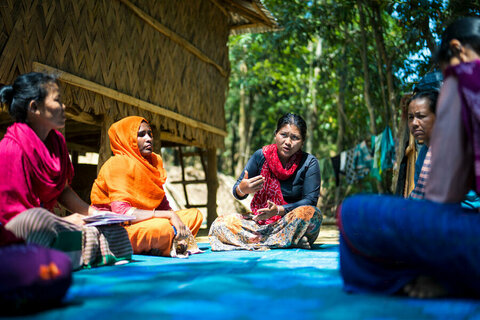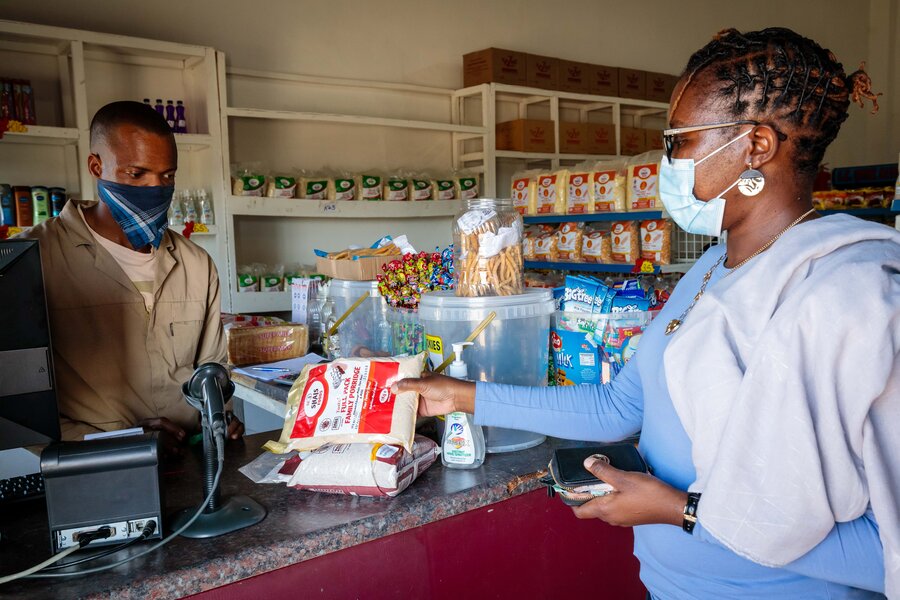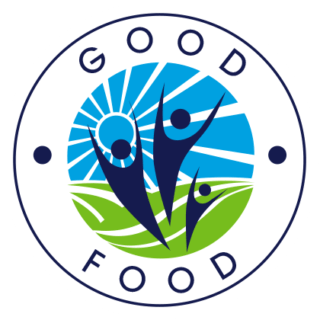Good Food Logo: How a simple graphic aims to boost nutrition in Zambia

As a businesswoman, Mirriam Chipulu has one key aim: keeping her customers happy. In her line of work — food processing and retail — this means providing food that is healthy, affordable... and good.
That might sound simple but it’s not easy. Standing in front of her shop, Shais Foods, on a bustling street in Lusaka, Zambia, Mirriam tells us about some of the challenges she faces in running the business. “Rent is a major one,” she says. “The premises here, we’re just renting them. Going forward, we are looking to have our own, so we can reduce the cost of doing business.”
How food systems can avert famine and help end hunger

Navigating an increasingly erratic climate is also difficult because it affects crop pricing and availability. Businesses like Mirriam’s have to place risky orders early on or find themselves having to turn to resellers — people who buy up crops and sell them on at exorbitant prices.
“Once they go into the hands of the middlemen, we are forced to buy from them,” she says. “Our pricing is affected, which means it is not only us affected but also the consumer.”
But rent, climate change and unscrupulous vendors are only part of the challenge. Mirriam is also working hard to ensure her products are good, in terms of both taste and nutrition.
And in a country where malnutrition rates are among the highest in the world, this is a goal well worth pursuing.

In Zambia today, nearly half of the population doesn’t get enough to eat, with 48 percent of people going hungry. Millions suffer from “hidden hunger” — they have enough food to survive but lack the nutrients they need to stay healthy and thrive.
Malnutrition isn’t just about a lack of nutrients — obesity and overweight are also a challenge in the country, driven by unhealthy diets and processed foods.
“A healthy diet is key in preventing a wide range of conditions,” says Marjolein Mwanamwenge, nutrition specialist in WFP’s Zambia office. “Stroke, diabetes, heart disease, even some cancers — eating nutritious, varied, and healthy diets can help us prevent these illnesses.”
Enter the Good Food Logo — the Government of Zambia, working with the SUN Business Network with support from the World Food Programme, is seeking to address the issue.

“One thing I have noticed is that people have started reading labels,” says Mirriam. “The customers who wander through the aisles of her shop are becoming more selective. They are very conscious — they pay attention to what is written on the products.”
And those customers are likely to notice a new symbol appearing on those products: the Good Food Logo. The Zambian Bureau of Standards, describes it as “a simple, positive mark to help Zambian people make better food choices.”

Here’s how it works. Experts develop a set of standards for a variety of food categories — including meats, cereals, snacks, and even water — to ensure they are safe and deliver the nutrients required for a healthy diet.
Companies whose products meet the logo’s strict criteria can apply to feature its distinctive design on products.
Bringing business on board in this way was key. “For the longest time, the food industry has been criticized for contributing to the global rise in malnutrition, especially overweight and obesity,” says Belinda Tshiula-Tembo, senior nutritionist at Zambia’s National Food and Nutrition Commission. However, “solutions to address the various forms of malnutrition depend, in part, on the innovation and efficiency of the food industry.”
The logo is a seal of approval, but it is also a sign of something broader, more fundamental — a healthy food system that connects farmers, food processors and consumers, delivering for them all.
“It can be even more [than that],” says Mike Perillo-Gentile, market development manager at global science company DSM, a WFP and SUN Business Network partner which contributed to the project. “With the potential it offers of driving better health and nutrition where needed most, the Good Food Logo provides a blueprint, a model for other countries facing these challenges.”

On the wall of Mirriam’s shop, passers-by will notice a pair of vividly coloured, hand-painted squares — these are symbols for two of the UN’s 17 Sustainable Development Goals: zero hunger and gender equality.
Mirriam is trying to do well by doing good. All her products now feature the Good Food Logo. And it’s making a difference, for her as well as for her clientele.
“The logo has helped us grow our market”, she says, adding that, “it gives people the power, the choice. When they see the logo, they have that assurance that this is good food.”
But this is also leading to farmers planting more sustainable crops, Mirriam tells us: “For example, millets were underutilized. Through the logo, millets are being utilized, because people understand that they are good — they are good for health, good for the soil, and good for the environment.”
And while Mirriam’s efforts to promote healthy, nutritious food consumption in her country continue, she is also conscious of the next goal: making it accessible to all. “I’m looking forward to food products being affordable to every Zambian,” she says.

WFP supports governments to create an enabling environment for the private sector to deliver on nutritional goals. Jayoung Lee, WFP’s Deputy Country Director in Zambia, says: “The Good Food Logo is a great example of how, with Government setting the right parameters, the private sector can be a force for good in making healthier food available and affordable to all.”
WFP does not endorse any product or service.
Find out more about WFP's work in Zambia



